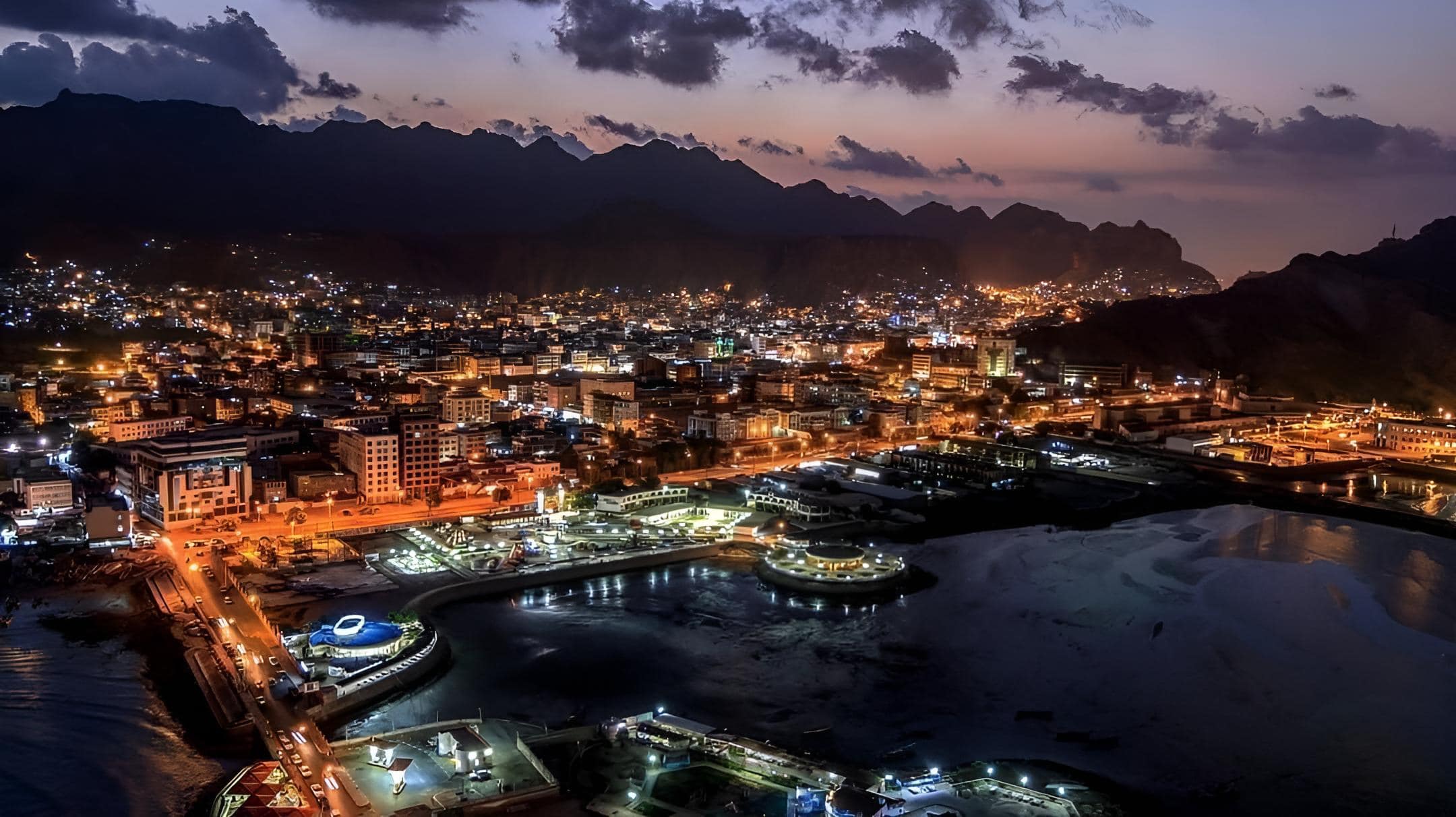
Port of Aden (local media)
Last updated on: 07-02-2024 at 7 AM Aden Time

‘However, it is clear here that building a special relationship between Aden and Paris is an urgent need, to provide maritime security that serves the two cities.’
Mehdhar Alawi (South24)
The interpretation of the term Urban Diplomatic Strategy tends to present two forms of special relations between cities - 'city twinning' and 'city diplomacy', both of which represent diplomatic behavior for the external engagement activities of cities at the international level. Historically, 'City twinning' is considered as a European diplomatic behavior. However, it took on an official international character when the International Sister Cities Organization was established in 1956. [1]
In this way, the popularity of this practice expanded and various forms of this cross-border cooperation between cities appeared to the world, and it can be said today that the number of the most visible city networks has reached 180 international Organizations such as: UN Habitat, WMCCC (World Mayors Council on Climate Change), and UCLG (United Cities and Local Governments).
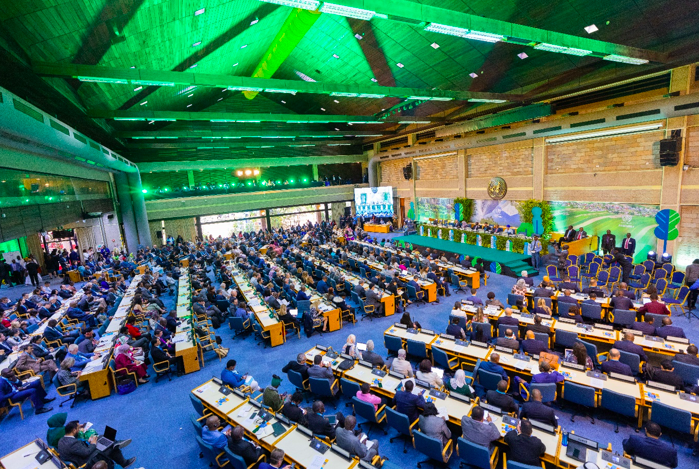
Opening session of the Second session of the UN-Habitat Assembly in Nairobi, Kenya on the 5th June 2023. ©UN-Habitat
This analysis discusses the broader landscape of international relations between cities beyond the role of the central government, by highlighting the main forms and impacts of this communication. It consider how this applies to the coastal cities of Aden and Hadramout governorates by drawing similarities and international comparisons to ultimately reach the active capacity of these cities to ”go abroad” by creating twining relations with their partner cities abroad.
Borrowing from the variety of scholars that engaged in discussing the diplomatic possibilities of cities, Rogier Van der Pluijm and Jan Melissen of the Netherlands Institute of International Relations have described the motivations that might lead cities to deploy diplomacy. “It is to desire to address issues traditionally ignored by states,” such as local infrastructure needs, or a bottom-up approach to peacekeeping in the region. [2]
This of course implies thinking, in the six dimensions of city diplomacy, which are: security, development, economic, culture, cooperative and representative, in addition to human rights. These dimensions will be discussed in a series of episodes examining the possibility of applying each dimension to the cities of Aden and Hadramout to develop a liveable environment, as they are coastal cities along the waters of the Gulf of Aden.
The security dimension
This article explores the role that the cities of Aden and Hadramout governorates can play as urban areas and coastal cities that have a geographic location which requires them to participate in securing the Maritimes space adjacent to the Red Sea, which is the gateway for receiving maritime trade coming through the waters of the Indian Ocean.
The Defence Technical Information Centre-DTIC, ”the repository for research and engineering information for the United States Department of Defense”, released a report in 2018 that described “the city” as an “international force that is rising economically, socially, and politically, if not militarily”. [3] Its importance is parallel to the great powers that have the ability to threaten the United States existentially.
Review of the facets of Yemen’s coastal strip and the current security dynamics therein
To begin discussing the security dimension of coastal cities, it is first important to review the aspects of Yemen’s coastal strip and the current security dynamics therein. The length of the Yemeni coastal line is around 2,252 km, starting from the southeastern governorates [Al-Mahra – Hadramout - Shabwa- Aden] and extending to the first sectors of the Northern part of the country [Al-Mocha (Taiz) - Hodeida].
The eastern and southern two-thirds, face the waters of the Gulf of Aden, with an area estimated at 1,482 km; while the western and northern third, face the waters of the Red Sea, with an area estimated at 770 km. [4]
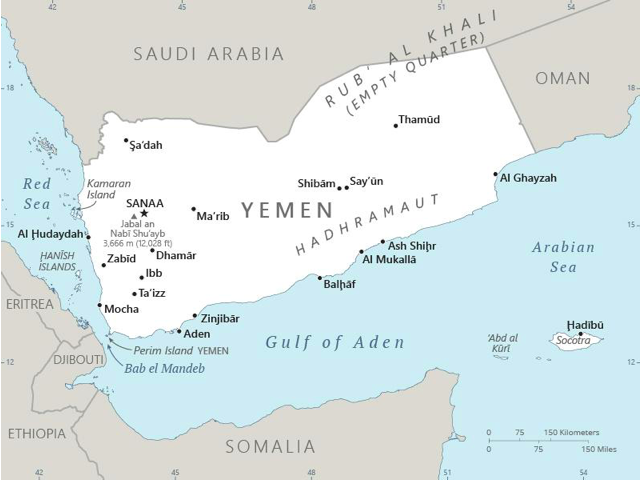
Yemen map showing major population centers as well as parts of neighboring countries and the Gulf of Aden and the Red Sea. ©The World Factbook, Washington, DC: Central Intelligence Agency, 2021.
Various security and military ground units are spread across more than 80 percent of the coastal strip and the south-eastern governorates, and extend to the southern part of the western coast of the country. These units ultimately belong to the Southern political project expressed by the Southern Transitional Council and represented by three representatives in the Presidential Leadership Council [PLC], which is internationally recognized as the legitimate authority of Yemen.
While the central part of the western coast of Yemen is under the control of the Republic Guard Forces, which formed from the remnants of the former regime of Yemen, and their control begins specifically from the Al Mocha region, its leader (Tariq Mohammed Saleh) holds the position of fourth deputy in the PLC.
Although these forces fulfill the security job amid an international vacancy in securing the coastal cities of Yemen, in reality they lack the proper tools to provide them with the minimum ability participate in deterrence operations within the surrounding waters.
As for the northern side of the western coast of Yemen, “directly facing international waters in the Red Sea”, its control lies with the Houthi group affiliated with Iran, and it is also in complete control of the port of Hodeidah.
It is critical here, to place the Houthi group in the classification category, considering it a religious group with a military and political agenda. Groups are often placed in this classification when they practice religious behaviors and concepts which indicate that their mission in society is to fight and then move on to another life once that mission has been achieved. As a result, they cannot be classified, for example, as an extremist national movement that can feel victorious simply by obtaining national demands or international recognition.
Over the past nine years, the Houthi group has been able to build its military arsenal using devious ways, notching up a military status that enables it to maneuver at the regional level. [5]
In a surprising development, in late September 2023 the Houthis were reported to have been in possession of a Su-22M4 fighter, a Soviet-era bomber capable of carrying bombs, missiles, and projectiles. [6]
In tandem with the actions of the controlling powers, the Houthis claim to the public that Yemenis are more united and in harmony with them, while on the contrary, the option of division has actually returned in Yemeni society. Moreover, the group's actions have actually begun to suggest its work as an independent state from South Yemen.
It's about understanding the complex micro-dynamics that drive the city
The examination of the importance of urban coastal cities led us to an observation made by the Commandant of the United States Marine Corps, General Robert B. Neller, ''Simulating such an environment is ‘very complex’, and even if we could, working in a ‘city’, it's not just about the built environment, it's about understanding the built environment, it's about understanding the complex micro- dynamics that drive the city. [7]
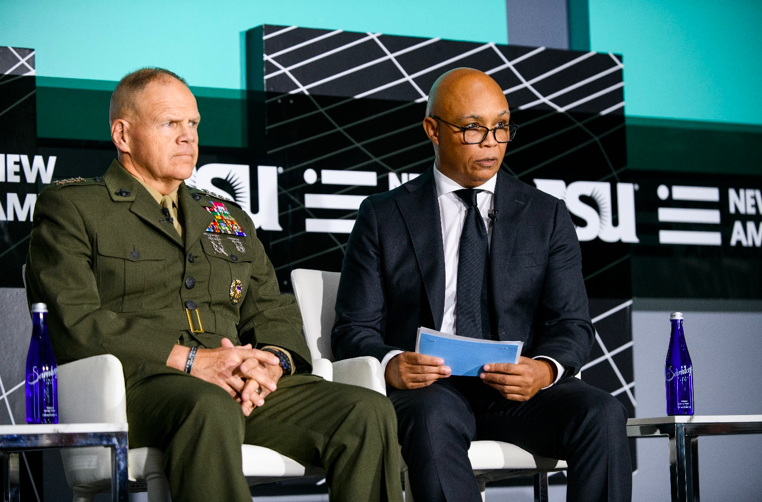 General Robert B. Neller, Future Security Forum at the Ronald Reagan Building in Washington, 29 April 2019. ©Clarissa Villondo / Karlin Villondo Via Flickr
General Robert B. Neller, Future Security Forum at the Ronald Reagan Building in Washington, 29 April 2019. ©Clarissa Villondo / Karlin Villondo Via Flickr
Thinking peace through
General Robert Neller's experience directs us towards practical steps that can help the coastal cities of Aden and Hadramout have their own roles in securing the territorial waters surrounding them.
To reach this reality, we need the legitimate forces controlling the mainland of the southeastern governorates and the first sectors of the Northern part of Yemen, to be given two centers for surveillance systems that would oversee the surrounding territorial waters.
First, a maritime coastal surveillance system STYRIS manufactured by Airbus, which is a system that integrates various sensors, such as radars, cameras, Automatic Identification Systems, weather sensors, and Radio Direction Finding antenna, needs to be installed to monitor the coastal areas and the adjacent waters. It can support missions such as coastal surveillance, vessel traffic services, critical infrastructure protection, and environmental protection. [8]
Second, a Maritime Task Force, should be set up at the request of the PLC based on a resolution of the United Nations Security Council, under the mandate of Resolution No.2452 related to the UNMHA. [9]*
Thirdly, a UN naval unit should be allowed to be deployed that will work to increase the capabilities of the naval forces affiliated with the PLC to carry out effective patrolling of the coasts of the southeastern cities of Yemen and the western coast. The UN naval unit should remain until the naval and security forces of the PLC become fully capable of accomplishing maritime security tasks on their own, similar to the Marine Task Force scenario of UNIFIL (United Nations Interim Force in Lebanon). [10]
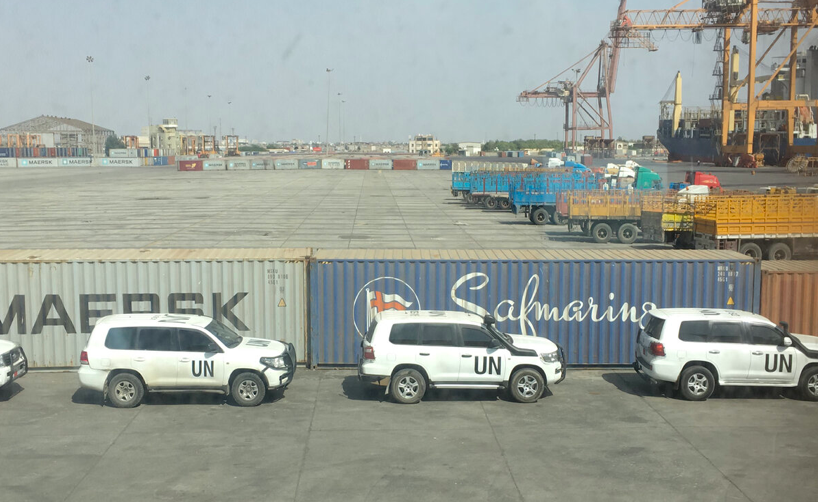
UNMHA vehicles lined up at the Hodeidah Port in 2019. ©UN Photo/UNMHA
Meanwhile, the Houthi group's control over the coastal strip of the western cities of the country continues to remain an additional serious threat to the waters of the Arabian Sea and the Indian Ocean.
Although city diplomacy focuses specifically on the special relationship between cities, we need to think broader in proportion to the challenges of the times. However, it is clear here that building a special relationship between Aden and Paris is an urgent need, to provide maritime security that serves the two cities. In an effort to reach this reality, on January 1, 2024 I addressed a letter to Mr. Ahmed Lamlas, Governor of the city of Aden, explaining the importance of getting the STYRIS system.
Moreover, the activity of UN Habitat as an international organization is also a critical interaction, particularly in building the capabilities of urban cities as well as playing a tough role in the security of the coasts of urban cities.
*Under the December 2018 Stockholm Agreement between the Yemeni government and Houthi rebels, the two sides agreed on a cessation of hostilities in Hodeidah governorate and the mutual redeployment of forces from Hodeidah city and the ports of Hodeidah, Salif and Ras Issa. The UN Mission to Support the Hodeidah Agreement (UNMHA) was established by the UN Security Council in January 2019, right after the Stockholm Agreement was reached, through adoption of Resolution 2452.
[1] Sister cities
[2] Ver der Plujim,R. and Melissen, J. ’City Diplomacy: The Expanding Role of Cities in international politics’ Netherlands Institute of International Relations, April 2007.
[3] Tallis, Joshua. and Klaus, Ian. ‘Cities and the Sea: The Urban Role in Maritime Security’, DEFENSE TECHNICAL INFORMATION CENTER, December 2018.
[4] Nagi, H.M.H, Delineating and Calculating the Length of Yemen's Mainland Shoreline. Int.J. Altern. Fuels. Energy, 5(1): 1-9, 2021.
[5] How the Houthis Built Their Arsenal: Defense and Intelligence Procurement, counter extremism project, November 2023.
[7] Judson, “US Troops Need Training to Battle in Future Megacities, Marine General
Warns.
[9] S, RES 2452, Un docs, 2019.
[10] Document Retrieval, ‘Security Council Resolution 1701: The situation in the Middle East’, un peacemaker, 2006.